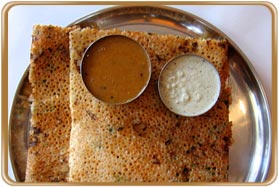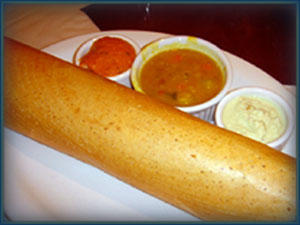LPCN 1107, Lipocine’s oral hydroxyprogesterone caproate (HPC) product candidate has the potential to become the first oral HPC product for the prevention of preterm birth in women with a prior history of at least one preterm birth. Potential benefits of our oral product candidate relative to current once-a-week intramuscular (IM) injectable product include the elimination of pain and site reactions associated with weekly injections, elimination of weekly doctor visits or visits from the nurse, and elimination of interference/disruption of personal, family or professional activities associated with weekly visits. Lipocine has successfully completed a Phase 1 study under a US IND designed to determine the pharmacokinetics and bioavailability of LPCN 1107 relative to an IM HPC, as well as safety and tolerability, in healthy non-pregnant female volunteers.
……………………………….
PATENT
http://www.google.com/patents/CN104017041A?cl=en
method of synthesizing progesterone caproate, comprising the steps of:
[0006] Step one to 17 α- hydroxy progesterone as a raw material, and n-hexyl acid in pyridine and p-toluene sulfonic acid catalysis by esterification reaction mixture esterified, the reaction is as follows
Step two, to the mixture of step one described esterified in an alcohol solution of acid catalysis to give progesterone caproate
Ketone crude reaction is as follows:
Step one to obtain a mixture containing progesterone caproate ester compound of step two the mixture is esterified in an alcohol solution of acid catalysis to give progesterone caproate crude. The reaction process of the present invention avoids the costly esterification agent n-hexyl anhydride used materials costs and recovery costs are significantly reduced.
Example 1
17 a – hydroxy progesterone 20g, n-caproic acid 40ml, topiramate 唳 16ml, p-toluenesulfonic acid 1.6g, toluene 300ml, 500ml three-necked flask were put, the reaction temperature was raised to between 110 ~ 120 ° C 3 hours TLC sampling The reaction was monitored. The reaction is as follows:
[0016] 17 a – hydroxy progesterone concentration treatment made after completion of the reaction, as a method for the enrichment process concentrated under reduced pressure and toluene, pyridine, and the unfinished batch reaction of n-hexanoic acid.
After the end of the [0017] concentrated in the three-necked flask was added 100mL ethanol, 3ml of concentrated hydrochloric acid was heated to reflux alcohol solution 2 hours, the reaction was monitored sampling TLC, complete hydrolysis of the diester into progesterone caproate stop the reaction. The reaction is as follows:
cooled to below 5 ° C, filtered and dried to obtain crude progesterone caproate 24g, crude yield of 120%.Progesterone caproate crude was purified with ethanol to give progesterone caproate boutique 19.Sg, progesterone caproate Collectibles yield based on the crude progesterone caproate 82.5% of the total yield of 99.0% o
Example 2
17 α – hydroxy progesterone 20g, n-caproic acid 50ml, topiramate 唳 30ml, p-toluenesulfonic acid 3g, toluene 300ml, 500ml three-necked flask were put, the reaction temperature was raised to between 110 ~ 120 ° C 3 hours TLC monitoring sampling reaction. 17 α – hydroxy progesterone concentration treatment made after completion of the reaction, as the concentration treatment method evaporated toluene, pyridine and n-hexyl Unreacted acid.
After the end of the [0022] concentrated in the three-necked flask was added 100mL ethanol, 5ml of concentrated hydrochloric acid was heated to reflux alcohol solution I hour, the reaction was monitored sampling TLC, complete hydrolysis of the diester into progesterone caproate stop the reaction. Cooled to below 5 ° C, filtered and dried to obtain crude progesterone caproate 23.5g, crude yield of 117.5%. Progesterone caproate crude was purified with ethanol to give progesterone caproate boutique 19.2g, progesterone caproate Collectibles yield based on the crude progesterone caproate 81.7%, the total yield was 96.0%.
Example 3
17 α – hydroxy progesterone 20g, n-caproic acid 60ml, topiramate 唳 40ml, p-toluenesulfonic acid 4g, toluene 300ml, 500ml three-necked flask were put, the reaction temperature was raised to between 110 ~ 120 ° C 2.5 hours TLC monitoring sampling reaction. 17 α – hydroxy progesterone concentration treatment made after completion of the reaction, as the concentration treatment method evaporated toluene, pyridine and n-hexyl Unreacted acid.
After the end of the [0025] concentrated in the three-necked flask was added 100mL ethanol, 8ml of concentrated hydrochloric acid was heated to reflux alcohol solution 40 minutes, the reaction was monitored sampling TLC, complete hydrolysis of the diester into progesterone caproate stop the reaction. Cooled to below 5 ° C, filtered and dried to obtain crude progesterone caproate 23g, crude yield of 115%. Progesterone caproate crude was purified with ethanol to give progesterone caproate fine 19g, progesterone caproate Collectibles yield based on the crude progesterone caproate 82.6% of the total yield of 95.0%.
Example 4
17 α – hydroxy progesterone 20g, n-caproic acid 60ml, topiramate 唳 40ml, p-toluenesulfonic acid 4g, benzene, 300ml, 500ml three-necked flask were put, the reaction temperature was raised to between 110 ~ 120 ° C 2.5 hours TLC monitoring sampling reaction. 17 α- hydroxy progesterone concentration treatment made after completion of the reaction, as a method for the enrichment process concentrated under reduced pressure benzene, pyridine and non-completion of the reaction of n-hexanoic acid.
After the end of the [0028] concentrated in the three-necked flask was added 100mL of methanol, 8ml of concentrated sulfuric acid was heated to reflux alcohol solution 40 minutes, the reaction was monitored sampling TLC, complete hydrolysis of the diester into progesterone caproate stop the reaction. Cooled to below 5 ° C, filtered and dried to obtain crude progesterone caproate 23g, crude yield of 115%. Progesterone caproate crude was purified with ethanol to give progesterone caproate fine 19g, progesterone caproate Collectibles yield based on the crude progesterone caproate 82.6% of the total yield of 95.0%.


.

 .
. .
.
.

.
 .
.



 .
.









 .
.




 DRUG APPROVALS BY DR ANTHONY MELVIN CRASTO …..FOR BLOG HOME CLICK HERE
DRUG APPROVALS BY DR ANTHONY MELVIN CRASTO …..FOR BLOG HOME CLICK HERE








 amcrasto@gmail.com
amcrasto@gmail.com